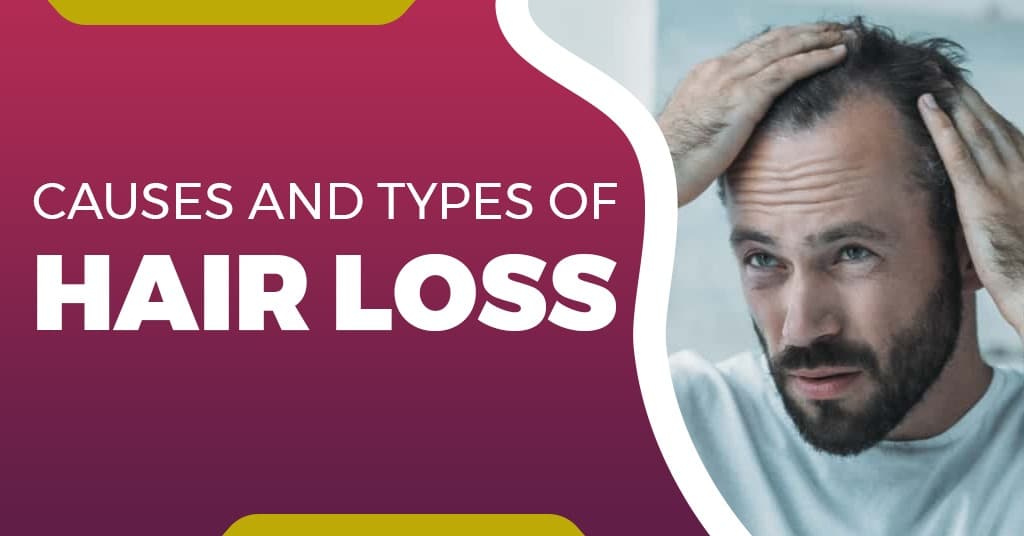Regardless of age, gender, or ethnicity, millions of people worldwide are concerned about hair loss. Certain types of hair loss can be treated with medication, while others might not go away and need to be permanent. We’ll examine the many types and causes of hair loss in this in-depth guide, providing light on this complicated condition and insights into potential hair transplant in Varanasi.
Causes of Hair Loss:
1.Genetics (Androgenetic Alopecia):
The most common cause of hair loss is androgenetic alopecia, sometimes referred to as female-pattern hair loss or male-pattern baldness. It is passed down through generations and results from a fusion of hormonal and genetic predispositions. Whereas androgenetic alopecia commonly results in move hair thinning across the scalp in women, it usually presents as a receding hairline and thinning at the crown in men.
2.Hormonal Changes:
Hormonal changes, especially in women, can be the cause of hair loss. Telogen effluvium, a temporary hair loss condition, can result from hormonal imbalances caused by pregnancy, childbirth, menopause, and thyroid disorders.
3.Medical Conditions and Treatments:
Hair loss can be brought on by a number of illnesses, including nutritional deficiencies, scalp infections, and the autoimmune disease alopecia areata. Chemotherapy-induced alopecia is another side effect of cancer treatments like radiation and chemotherapy that lasts for a short while.
4.Stress:
Stress, whether mental or physical, can interfere with the hair growth cycle and cause more hair loss and thinning. Conditions such as telogen effluvium, in which a greater number of hair follicles enter the resting phase simultaneously, may be caused by constant stress.
Types of Hair Loss:
- Androgenetic Alopecia:
As mentioned before, the most common type of hair loss that affects both men and women is androgenetic alopecia. It is typified by a patterned and progressive loss of hair from the scalp, which over time causes a gradual decrease in hair density.
- Alopecia Areata:
An autoimmune condition called alopecia areata results in patchy hair loss on the scalp, brows, and other parts of the body. Hair loss appears in discrete patches and is caused by the immune system of the body mistakenly attacking the hair follicles.
- Telogen Effluvium:
During the resting (telogen) phase of the hair growth cycle, excessive hair shedding is a defining feature of a type of temporary hair loss known as telogen effluvium. A number of things, including stress, hormonal shifts, disease, surgery, or specific drugs, can cause it.
- Traction Alopecia:
Repetitive pulling or straining on the hair follicles, frequently as a result of tight hairstyles like ponytails, braids, or extensions, causes traction alopecia. This ongoing stress, especially around the hairline and temples, can harm hair follicles over time and cause hair loss.
Conclusion:
In order to effectively manage and address this common concern, it is first necessary to understand the causes and types of hair loss. There are several treatment options available to help restore hair growth and enhance the general health of the scalp, regardless of whether it’s genetic, hormonal, or brought on by outside factors. People who are experiencing hair loss can regain confidence and achieve healthier, fuller-looking hair by consulting the best hair transplant surgeon in Varanasi and using a holistic approach to hair care.

